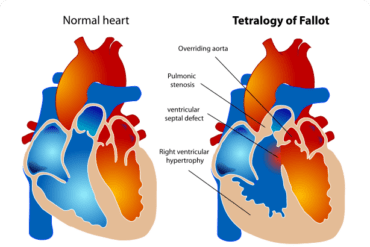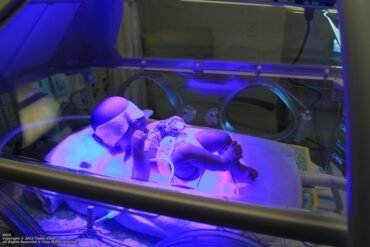Common Symptoms of Neonatal Anomalous Left Coronary Artery from the Pulmonary Artery (ALCAPA)

Table of Contents
- Introduction to ALCAPA: Understanding the condition
- Early Warning Signs: Identifying neonatal ALCAPA
- Diagnostic Techniques: Tools for accurate diagnosis
- Complications and Risks: Long
- term effects to be aware of
- Treatment Options: Managing ALCAPA in neonates
Introduction to ALCAPA: Understanding the Condition
Neonatal Anomalous Left Coronary Artery from the Pulmonary Artery (ALCAPA) is a rare heart condition that affects infants. It occurs when the left coronary artery, responsible for supplying oxygen-rich blood to the heart muscle, originates from the pulmonary artery instead of the aorta. This abnormality can lead to serious health complications if left untreated.
ALCAPA is considered a critical congenital heart defect and is typically diagnosed in the first few months of life. The condition affects approximately 1 in every 300,000 live births, making it quite rare. Early diagnosis and prompt treatment are essential for a positive outcome.
It is important to understand the common symptoms associated with ALCAPA, as they can help in early detection and intervention. While symptoms may vary from one infant to another, there are a few signs that are commonly observed:
- Poor weight gain and growth
- Sweating, especially during feeding or physical activity
- Rapid breathing or difficulty breathing
- Fatigue and tiring easily
- Irritability and fussiness
- Chest pain or discomfort
- Heart palpitations
If your infant exhibits any of these symptoms, it is crucial to seek medical attention promptly. ALCAPA can lead to severe complications, including heart failure, arrhythmias, and even sudden cardiac arrest. A thorough evaluation by a pediatric cardiologist is necessary for proper diagnosis and treatment planning.
The diagnosis of ALCAPA involves various diagnostic tests such as echocardiography, cardiac catheterization, and MRI, which help visualize the heart’s structures and blood flow. Once diagnosed, immediate surgical intervention is required.
The primary treatment for ALCAPA is to restore a normal blood supply to the heart muscle. This is achieved through a surgical procedure called coronary artery reimplantation or coronary artery bypass surgery. The goal of the surgery is to reattach the left coronary artery to the aorta, ensuring improved blood flow to the heart.
Following surgery, infants with ALCAPA require careful monitoring and long-term follow-up to assess their heart’s function and ensure appropriate growth and development. Most children who undergo timely treatment can lead healthy lives without significant complications.
In conclusion, ALCAPA is a rare but serious heart condition affecting infants. Understanding the symptoms and seeking prompt medical attention is crucial for early diagnosis and proper treatment. With the advancements in modern medicine, ALCAPA can be effectively managed, allowing affected children to thrive and lead fulfilling lives.
Early Warning Signs: Identifying Neonatal ALCAPA
Neonatal Anomalous Left Coronary Artery from the Pulmonary Artery (ALCAPA) is a rare but potentially life-threatening congenital heart defect that requires immediate medical attention. Identifying the early warning signs of ALCAPA is crucial for the timely diagnosis and effective treatment of this condition. Here are some common symptoms to be aware of:
- Rapid breathing or shortness of breath
- Excessive sweating
- Pale skin or bluish discoloration (cyanosis)
- Poor appetite and difficulty feeding
- Trouble gaining weight or failure to thrive
- Irritability or excessive crying
If your baby exhibits any of these symptoms, it is essential to consult a pediatrician or a cardiologist promptly. A thorough physical examination and additional diagnostic tests will be conducted to confirm the diagnosis of ALCAPA.
During the physical examination, the doctor may listen to your baby’s heart for abnormal sounds or murmurs. They will also check for a weak or absent pulse in the femoral artery, which could indicate reduced blood flow. If ALCAPA is suspected, the healthcare professional may recommend further tests such as:
- Echocardiogram: This ultrasound test provides detailed images of the heart and helps identify the abnormal blood flow.
- Electrocardiogram (ECG): This measures the electrical activity of the heart and can show irregularities or abnormalities.
- Cardiac catheterization: This invasive procedure involves inserting a thin tube into a blood vessel to obtain detailed information about the heart’s structure and blood flow.
Once diagnosed, prompt surgical intervention is necessary to correct the defect and restore normal blood flow to the heart. The surgical procedure typically involves reattaching the left coronary artery to the aorta, allowing oxygenated blood to reach the heart muscle efficiently.
In conclusion, vigilance and knowledge of the early warning signs of neonatal ALCAPA are vital for early detection and treatment. Remember, timely medical intervention significantly improves outcomes for infants with this condition. If you suspect any abnormal symptoms in your newborn, don’t hesitate to seek medical advice immediately.
Diagnostic Techniques: Tools for accurate diagnosis
Accurate diagnosis of Neonatal Anomalous Left Coronary Artery from the Pulmonary Artery (ALCAPA) is crucial for appropriate management and timely intervention. To diagnose ALCAPA effectively, physicians employ various diagnostic techniques and tools. These help in confirming the condition and providing a clear understanding of the severity and potential risks associated with this cardiac anomaly. Let’s explore some of the diagnostic techniques commonly used for accurate diagnosis of ALCAPA:
- Echocardiography: This non-invasive imaging technique uses sound waves to create moving pictures of the heart. Echocardiography helps in visualizing the anomalous origin of the left coronary artery from the pulmonary artery and assessing the blood flow pattern.
- Electrocardiogram (ECG): ECG measures the electrical activity of the heart. In ALCAPA, ECG may show characteristic changes, such as ST-segment elevation in leads V1-V3 or abnormal Q waves, suggesting myocardial ischemia or infarction.
- Cardiac Magnetic Resonance Imaging (MRI): MRI provides detailed images of the heart, enabling doctors to assess the anatomy, function, and blood flow within the heart and its surrounding structures. It can help identify the exact origin and course of the anomalous left coronary artery.
- Coronary Angiography: This invasive procedure involves the injection of a contrast dye into the coronary arteries, followed by X-ray imaging. Coronary angiography helps in visualizing the coronary artery anatomy and determining the blood flow to the heart muscle.
- Cardiac Computed Tomography (CT) Scan: CT scan uses X-rays and computer technology to create detailed cross-sectional images of the heart. It aids in assessing the arterial structure, identifying any anomalies, and evaluating the blood flow.
Proper diagnosis of ALCAPA is imperative for planning appropriate treatment options. These diagnostic techniques, along with a comprehensive medical history and physical examination, enable healthcare professionals to accurately diagnose ALCAPA. Early detection and prompt intervention can significantly improve the prognosis and quality of life for infants with this congenital heart defect.
Complications and Risks
Neonatal Anomalous Left Coronary Artery from the Pulmonary Artery (ALCAPA) is a rare congenital heart defect that can lead to various complications and risks. Understanding these potential complications is crucial for timely diagnosis and effective management. Here are some common symptoms associated with ALCAPA:
- Chest pain or discomfort
- Rapid breathing or shortness of breath
- Poor weight gain
- Irritability or fussiness
- Pale skin
- Sweating
- Weak or rapid pulse
- Fatigue or weakness during feeding
- Frequent respiratory infections
- Feeding difficulties
If left untreated, ALCAPA can result in severe complications:
- Heart failure: The anomalous left coronary artery deprives the heart of oxygen-rich blood, leading to weakened heart muscles and heart failure.
- Myocardial infarction: The coronary artery may become narrowed or blocked, resulting in a heart attack.
- Arrhythmias: ALCAPA can disrupt the heart’s electrical signals, leading to abnormal heart rhythms.
- Cardiomyopathy: The strain on the heart due to inadequate blood supply can cause the heart muscle to become enlarged, thickened, or rigid.
- Pulmonary hypertension: Increased pressure in the pulmonary artery can lead to high blood pressure in the lungs, affecting their ability to function properly.
- Sudden cardiac arrest: In some cases, ALCAPA can cause sudden cardiac arrest, which requires immediate medical attention.
Early diagnosis and appropriate treatment are crucial to minimize the risks associated with ALCAPA. Prompt surgical intervention is often required to correct the abnormal blood flow and restore proper function to the heart. Close monitoring, regular check-ups, and ongoing medical care are essential to manage potential complications and optimize the long-term health of individuals with ALCAPA.
Common Symptoms of Neonatal Anomalous Left Coronary Artery from the Pulmonary Artery (ALCAPA)
Neonatal Anomalous Left Coronary Artery from the Pulmonary Artery (ALCAPA) is a rare congenital heart defect that affects infants. It occurs when the left coronary artery, responsible for proper blood supply to the heart, originates from the pulmonary artery instead of the aorta. This abnormality can lead to various symptoms and potential complications. Understanding these common symptoms is crucial for timely diagnosis and treatment. Here are some important signs to be aware of:
- Poor feeding: Infants with ALCAPA may experience difficulty in feeding or demonstrate reduced appetite due to insufficient blood supply to the heart muscles.
- Failure to thrive: Inadequate blood flow to the heart can result in poor weight gain and growth, causing babies to fail to meet developmental milestones.
- Rapid breathing: ALCAPA can cause rapid and shallow breathing, often accompanied by wheezing or grunting sounds. This is a sign of the heart trying to compensate for the inadequate blood supply.
- Cyanosis: Infants with ALCAPA may exhibit blue discoloration of their skin, lips, or nail beds. Cyanosis occurs due to reduced oxygen levels in the blood.
- Cardiac murmurs: A doctor may detect abnormal heart sounds, also known as murmurs, during a physical examination. These murmurs are caused by turbulent blood flow resulting from the abnormal coronary artery anatomy.
- Heart failure: If left untreated, ALCAPA can lead to congestive heart failure, characterized by symptoms such as shortness of breath, fatigue, and fluid retention.
It is important to note that some infants with ALCAPA may not display any symptoms at birth, making early detection challenging. However, as the baby grows, the abnormal blood flow can cause severe complications such as myocardial ischemia, arrhythmias, and even sudden cardiac arrest.
Should you notice any of the above symptoms or have concerns about your baby’s heart health, it is essential to consult a pediatrician. Prompt diagnosis and appropriate medical intervention can significantly improve the prognosis for infants with ALCAPA.
Treatment Options: Managing ALCAPA in Neonates
Anomalous Left Coronary Artery from the Pulmonary Artery (ALCAPA) is a rare congenital heart defect that occurs in newborns, where the left coronary artery originates from the pulmonary artery instead of the aorta. This condition can result in inadequate blood supply to the heart muscle, leading to various symptoms and potential complications. Timely diagnosis and appropriate treatment are crucial for managing ALCAPA in neonates to improve their prognosis and long-term outcomes.
There are several treatment options available for managing ALCAPA in neonates:
- Surgical Repair: Surgery is the primary treatment approach for ALCAPA. The main goal of surgery is to restore normal blood flow to the heart muscle. This is typically achieved by re-implanting the left coronary artery into the aorta, allowing it to receive oxygenated blood. Early surgical intervention is important to prevent irreversible damage to the heart.
- Coronary Artery Bypass Grafting (CABG): In cases where direct re-implantation of the left coronary artery is not feasible, CABG may be performed. This involves using a blood vessel graft to create a new pathway for blood flow, bypassing the abnormal coronary artery. CABG is considered when the infant’s condition is stable and deemed suitable for this procedure.
- Medical Management: Medications, such as beta-blockers and angiotensin-converting enzyme (ACE) inhibitors, may be prescribed to help manage symptoms and improve cardiac function in some cases. However, medical management alone is rarely sufficient as a long-term solution and is usually combined with surgical intervention.
- Cardiac Rehabilitation: After surgical repair or other treatment procedures, neonates with ALCAPA may require specialized cardiac rehabilitation programs. These programs aim to improve cardiac function, enhance physical endurance, and monitor the infant’s overall recovery progress.
Timely intervention and appropriate treatment options are key in managing ALCAPA in neonates. The specific treatment plan depends on various factors, including the infant’s overall health, severity of symptoms, and the presence of any associated heart abnormalities. Surgical repair is typically the preferred approach, but medical management and cardiac rehabilitation may also play significant roles in the overall management strategy. With proper treatment and ongoing care, the prognosis for neonates with ALCAPA can be improved, allowing them to lead a healthy and fulfilling life.


























